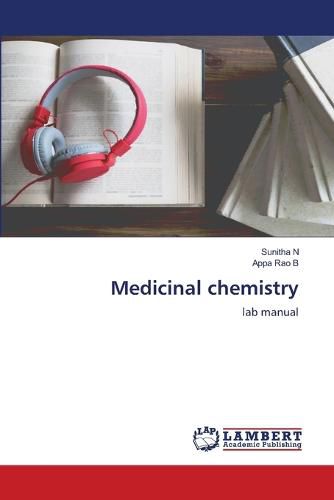Readings Newsletter
Become a Readings Member to make your shopping experience even easier.
Sign in or sign up for free!
You’re not far away from qualifying for FREE standard shipping within Australia
You’ve qualified for FREE standard shipping within Australia
The cart is loading…






SYNTHESIS AND CHARACTERIZATION OF 3,5- DIMETHYL PYRAZOLEAIM: To synthesize 3,5- dimethyl pyrazole in the laboratory and characterize the crude and re-crystallized product.APPARATUS/INSTRUMENT REQUIRED: Reflux condenser, round bottomed flask, beaker, glass rod, pipette, buchner funnel, filtering flask, water bath, watch glass, capillary tube, thiele's tube, thermometer, electronic balance, vacuum pump and filter paper.CHEMICALS REQUIRED: Acetyl acetone, hydrazine hydrate, ethyl alcohol and n-hexane/petroleum ether.CHEMICAL REACTION: REACTION MECHANISM: PRINCIPLE: Substituted pyrazoles are prepared by condensation of 1,3-diketones with hydrazine. For example, acetyl acetone and hydrazine gives 3,5-dimethyl pyrazole. The enamine and imine formed undergo cyclization to yield the product.PROCEDURE: 1. Take 0.06 moles of hydrazine hydrate in a 250 ml flask.2. To this, add 25 mL of ethyl alcohol with constant stirring.3. Now place the flask in an ice-old water or ice-bath and wait for 10 minutes.
$9.00 standard shipping within Australia
FREE standard shipping within Australia for orders over $100.00
Express & International shipping calculated at checkout
SYNTHESIS AND CHARACTERIZATION OF 3,5- DIMETHYL PYRAZOLEAIM: To synthesize 3,5- dimethyl pyrazole in the laboratory and characterize the crude and re-crystallized product.APPARATUS/INSTRUMENT REQUIRED: Reflux condenser, round bottomed flask, beaker, glass rod, pipette, buchner funnel, filtering flask, water bath, watch glass, capillary tube, thiele's tube, thermometer, electronic balance, vacuum pump and filter paper.CHEMICALS REQUIRED: Acetyl acetone, hydrazine hydrate, ethyl alcohol and n-hexane/petroleum ether.CHEMICAL REACTION: REACTION MECHANISM: PRINCIPLE: Substituted pyrazoles are prepared by condensation of 1,3-diketones with hydrazine. For example, acetyl acetone and hydrazine gives 3,5-dimethyl pyrazole. The enamine and imine formed undergo cyclization to yield the product.PROCEDURE: 1. Take 0.06 moles of hydrazine hydrate in a 250 ml flask.2. To this, add 25 mL of ethyl alcohol with constant stirring.3. Now place the flask in an ice-old water or ice-bath and wait for 10 minutes.